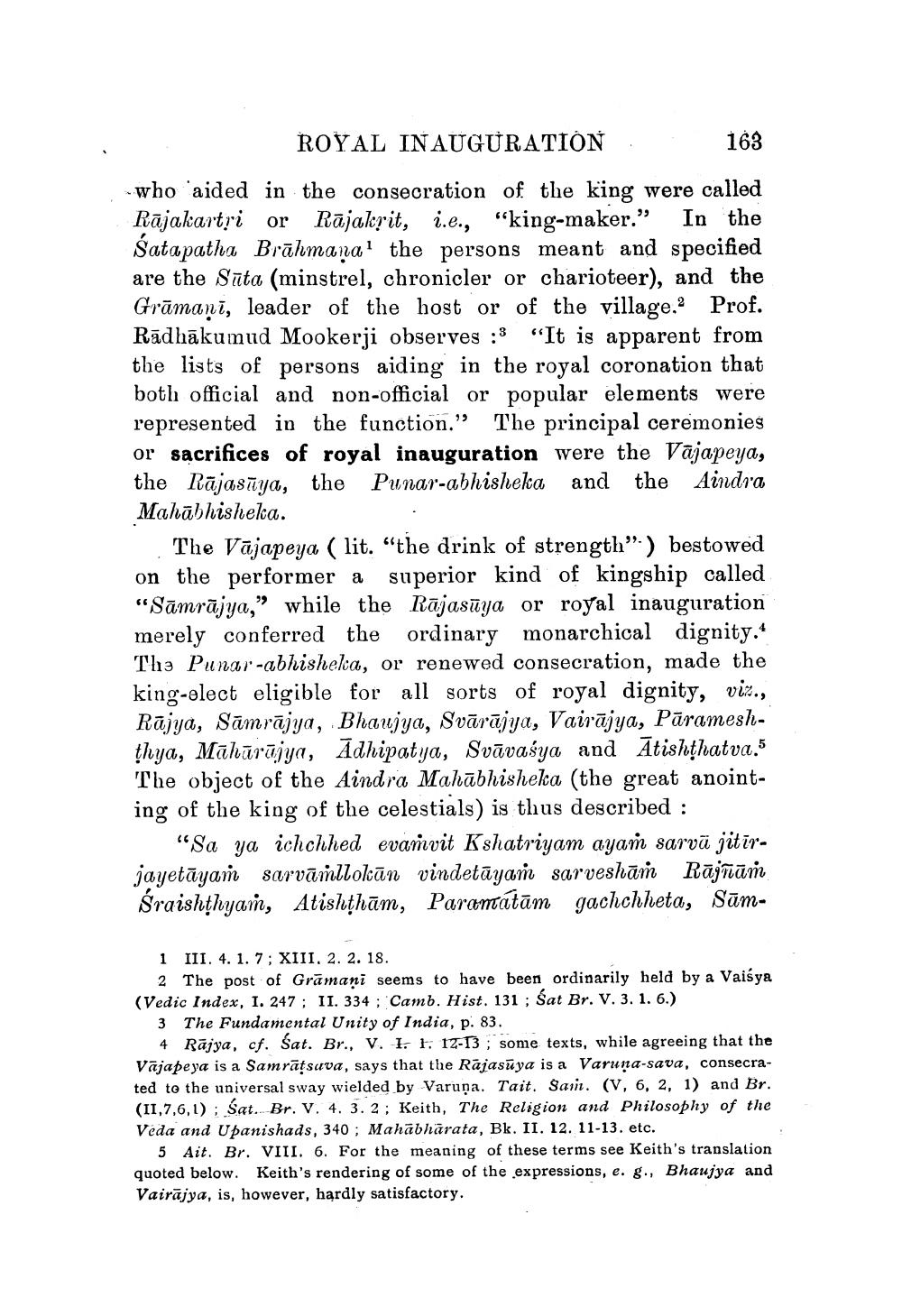________________
ROYAL INAUGURATION: 163 who 'aided in the consecration of the king were called Rājakartri or Rājakrit, i.e., “king-maker.” In the Satapatha Brāhmana? the persons meant and specified are the Sata (minstrel, chronicler or charioteer), and the Grāmanī, leader of the host or of the village. Prof. Rādhākumud Mookerji observes :3 "It is apparent from the lists of persons aiding in the royal coronation that both official and non-official or popular elements were represented in the function.” The principal ceremonies or sacrifices of royal inauguration were the Vājapeya, the Rājasūya, the Punar-abhisheka and the Aindra Mahābhisheka.
The Vājapeya ( lit. "the drink of strength".) bestowed on the performer a superior kind of kingship called “Samrājya," while the Rājasūya or royal inauguration merely conferred the ordinary monarchical dignity. The Punar-abhisheka, or renewed consecration, made the king-elect eligible for all sorts of royal dignity, viz., Rajya, Sāmrājya, Bhaujya, Svārājya, Vairājya, Pārameshthya, Māhūrājya, Ādhipatya, Svāvaśya and Ātishthatva.5 The object of the Aindra Mahābhisheka (the great anointing of the king of the celestials) is thus described :
"Sa ya ichchhed evamvit Kshatriyam ayam sarvä jitīrjayetāyan sarvāṁllolcān vindetāyaṁ sarveshāṁ Rājñām Šraishthyam, Atishthām, Parantátām gachchheta, Sām
1 III. 4. 1. 7; XIII, 2. 2. 18.
2 The post of Grāmani seems to have been ordinarily held by a Vaisya (Vedic Index, I. 247: II. 334 ; Camb. Hist. 131 ; Sat Br. V. 3. 1. 6.)
3 The Fundamental Unity of India, p. 83.
4 Rajya, cf. Sat. Br., V. 1. f. 12-13 ; some texts, while agreeing that the Vajapeya is a Samrātsuva, says that the Rajasūya is a Varuņa-sava, consecrated to the universal sway wielded by Varuņa. Tait. San. (V, 6, 2, 1) and Br. (11,7,6,1); Sat. Br. V. 4. 3. 2; Keith, The Religion and Philosophy of the Veda and Upanishads, 340 ; Mahābhārata, Bk. II. 12. 11-13. etc.
5 Ait. Br. VIII. 6. For the meaning of these terms see Keith's translation quoted below. Keith's rendering of some of the expressions, e. g., Bhaujya and Vairājya, is, however, hardly satisfactory.




